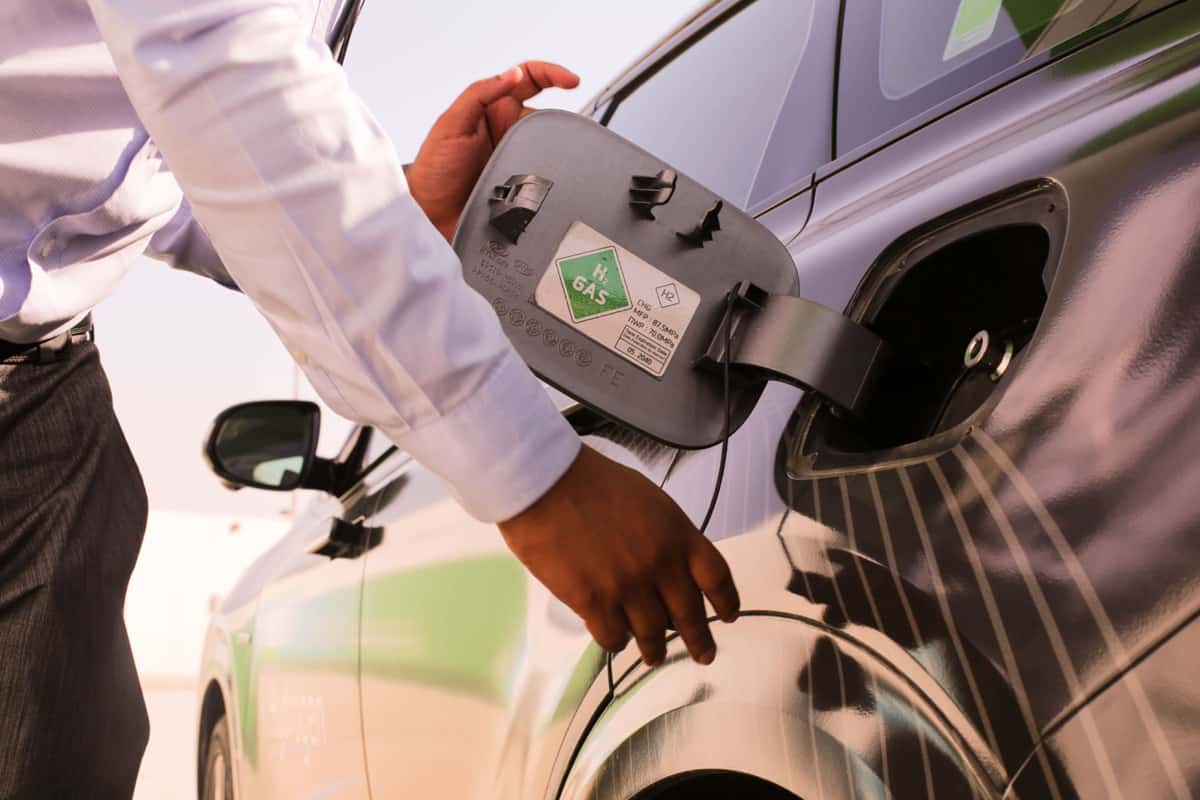Saudi Arabia and the United Arab Emirates are leading the Arab world’s push for the hydrogen economy, striking partnerships with companies in the West, all in the hope of emerging as major exporters of hydrogen to the world.
The business strategy stems from the belief that GCC has a plethora of renewable energy sources that can be tapped into to produce hydrogen. Both the UAE and Saudi Arabia have access to natural gas supplies for blue hydrogen and nuclear power for pink hydrogen.
As part of an Arthur D. Little webinar titled “Preparing the Middle East and Southeast Asia for the Hydrogen Economy,” global head of Arthur D. Little’s Sustainability Strategy practice, Martijn Eikelenboom, partner Carlo Stella and senior principal Eddy Ghanem discussed the critical enabling conditions for the H2 economy in those regions, as well as the overall sustainability strategy of Arthur D. Little.
GCC countries are moving swiftly to gain the first-mover advantage while implementing risk-savvy measures to guarantee a high demand across partnerships and consortia. As a result, the region is well-positioned to capture a significant part of the anticipated global demand in the H2 economy.

One of Arthur D. Little’s top hydrocarbon experts, Eddy Ghanem, told TRENDS that Saudi Arabia is currently attempting to become the world’s leading producer and exporter of Hydrogen, while the UAE aims to take over 25 percent of that market.
Saudi Arabia recently announced the first Green H2 GW scale facility in the world in NEOM. At the same time, the UAE pushed several production endeavors, such as the one between Masdar and Engie. In addition, both countries are also actively securing the demand for H2 with several MOUs in place with countries such as South Korea and Germany.
At the same time, other countries in the GCC are also taking steps towards a hydrogen-powered economy such as Oman and its new 14-GW green H2 electrolyzer, further positioning the GCC as a logistical and renewables powerhouse, according to Ghanem,
Conditions and projects in the Middle East
Policy and regulations conditions are fundamental to increase the usage of Hydrogen, experts at Arthur D. Little assured; they divided them as follows:
- National Hydrogen Policies: Traditional subsidies, demand-side measures.
- Multinational Hydrogen policies: green procurement policies, carbon tax, and ETs, RDI funding.
- Bilateral Multilateral agreements: green certification, CFDs, and MMs.
During the webinar, experts mentioned the most significant projects in the Middle East:
- Fertiglobe plant: Abu Dhabi: Sold its first blue ammonia cargo to Itochu for use in fertilizer production expected to start in 2025.
- Neom Hydrogen Plant: Huge green Hydrogen Plant using 4 gigawatts of Saudi renewable electricity expected to start in 2025.
Market size and hydrogen demand
The hydrogen industry is estimated to be worth more than US$ 700 billion in the upcoming years, and GCC nations can get a significant share of this revenue through exports, which will provide substantial economic value.
There is a big market for hydrogen production in the region due to an ample supply of low-cost renewable energy and various hydrogen feedstocks.
“Aside from looking into electrolyzers and other manufacturing, transportation, and demand-side technologies, GCC countries should consider localizing the Hydrogen value chain elements,” said Ghanem.
He continued: “In addition, new power plants will be required to meet the increased demand for renewable energy that hydrogen would engender.”
With GCC states revising their 2030 NDC targets and long-term net-zero objectives, the market for green Hydrogen is projected to rise in the area. As a result, it is expected that Saudi Arabia and the United Arab Emirates will lower their carbon emissions by 278 million tons per year by 2030.
In addition, Net-Zero targets have been set by Saudi Arabia, the United Arab Emirates, and Bahrain. As an upshot, industry, particularly steel, cement, and petrochemical, is predicted to benefit significantly from Hydrogen.
Regulations and policies
Government policies and regulations are a significant factor in hastening hydrogen uptake as fuel.
Traditional mechanisms, such as subsidies, demand-side initiatives, and green procurement policies, are being examined around the world,” Ghanem said in a recent interview with TRENDS. In expansion, the carbon tax and emissions trading system (ETS), RDI funding, H2 certification, and contract for differences (CFDs) are additional regulatory and incentive tools available to support the H2 economy.
Hydrogen types in the region
Based on its comparative advantage, the GCC might become a multi-colored hub for Hydrogen production. In addition, green hydrogen production might be very cost-competitive in many nations in the Middle East, such as Saudi Arabia and Oman, because electricity is the primary component of the production cost.
Within these countries, “Green Hydrogen plants could benefit from a dual source of renewable energy with over 5000 hours of combined wind and solar feed that could drive the production price to the vicinity of 2 dollars per Kg”, as Ghanem said.
He added, “the region has an abundance of natural gas, which is the main feedstock of blue hydrogen production. UAE could also investigate the production of pink Hydrogen by utilizing extra capacity from its nuclear plants”.
MENA’s first hydrogen project
The Mohammed bin Rashid Al Maktoum Solar Park is the first in the Middle East and North Africa to create Hydrogen using solar energy, thanks to a green hydrogen initiative performed by the Dubai Electricity and Water Authority and Siemens Energy.
The experimental station, which covers an area of about 10,000 square meters, has been designed and built to accommodate future applications and test platforms for the various uses of Hydrogen, including energy production and transportation.
Electrolysis is used to generate green Hydrogen using renewable energy sources. It also allows the storage of enormous amounts of energy for long periods.
Hydrogen can produce energy through engines, gas turbines, and fuel cells. It can also be used as a feedstock for chemical industries or fuel for transportation, a reducing agent in steel industries, or to produce the heat needed for industrial processes.
Hydrogen can also be utilized for individual purposes like heating and cooking in homes.
Hydrogen colors
There are three forms of Hydrogen that have been identified, each with its unique color designation:
- Green Hydrogen, produced by electrolysis
- Gray Hydrogen is produced by spontaneous thermal reforming or steam treatment.
- Blue hydrogen generates Hydrogen artificially by a spontaneously heat-producing chemical reaction due to high energy or steam treatment.
Hydrogen and oxygen are two of the elements that make up water. Decomposing water into its constituent parts using renewable energy, such as electrolysis, produces green hydrogen.
Here lies the green hydrogen importance based on its link to endurable energy in addition to its role as a sustainable economic advantage; due to its low cost of production, it creates a new economic structure called the “green hydrogen economy.”
Green hydrogen has two subspecies, both of which have the advantage of being produced using renewable energy. Pink hydrogen, like green hydrogen, is produced using electrolysis, but the process relies on nuclear power instead of fossil fuels. While the electrolysis method is used to create yellow hydrogen, solar energy is needed to power the electrolysis process.







